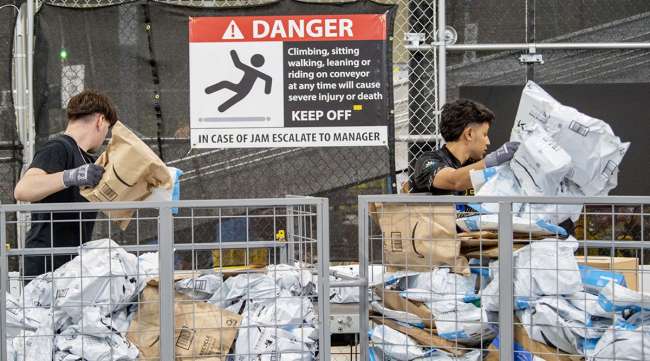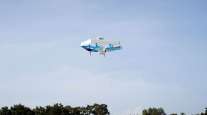Amazon Prime Day Drives All Online Sales Up 6.1%

[Stay on top of transportation news: Get TTNews in your inbox.]
U.S. shoppers spent $12.7 billion online during Amazon.com Inc.’s 48-hour Prime Day, up 6.1% from a year ago but short of estimates for 9.5% growth, according to Adobe Inc.
An increasing share of customers used “buy now, pay later” services, Adobe said, indicating shoppers are concerned about the economy.
“For months, consumers have felt the effects of persistent inflation and an uncertain economic environment, and it has pushed shoppers to embrace more flexible ways to manage their spending around the Prime Day event,” said Vivek Pandya, an analyst with the technology company. “The revenue growth attributed to buy now, pay later is a preview of what we can expect in the months ahead, especially as we near the holiday shopping season.”
Adobe measures total spending on U.S. online shopping sites during the Prime Day period because a host of retailers, including Walmart Inc. and Target Corp., draft off Amazon’s marquee summer sale, offering their own discounts and boosting overall e-commerce sales at a time of year when shoppers typically pull back.
Amazon shares rose almost 3% in New York, part of a broader rally.
And that’s a wrap on Prime Day! Thank you to all of our customers and employees who made it possible. 🧡 pic.twitter.com/r0ckZ2pi5z — Amazon (@amazon) July 13, 2023
Numerator, which tracked purchases by more than 34,000 unique buyers on Amazon, said the average order size during the event was $54.05, up about 3% from a year earlier. More than half of Prime Day shoppers surveyed by the data provider say they compared Amazon’s prices with those at other retailers before making their purchases. Amazon Chief Executive Officer Andy Jassy said in an interview with CNBC last week that price-conscious shoppers were “trading down whenever they can” given the uncertain economy.
“In an event typically dominated by electronics, we instead saw many shoppers stocking up on everyday essentials like pet food or pantry staples,” Numerator analyst Amanda Schoenbauer said in a statement. “It seems many used the event to save on their standard purchases or held off on buying larger ticket items until the sale came around.”
Insider Intelligence expected shoppers worldwide to spend an estimated $12.9 billion on Amazon during the event, up about 11% from last year.
Amazon doesn’t break out the financial metrics of its biggest sale, instead releasing mostly anecdotal information about top sellers. The company on July 13 said the first day of the sale was the biggest in its history and that shoppers purchased more than 375 million items over two days.
Want more news? Listen to today's daily briefing above or go here for more info
Amazon launched Prime Day in 2015 to attract new subscribers, who pay $139 a year for shipping discounts, video streaming and other benefits. The event helps Amazon lock in shoppers before the holidays and deepen its relationship with existing customers by offering them exclusive deals on Amazon gadgets and other products. About 167 million Amazon shoppers in the U.S. had Prime memberships as of March, unchanged from a year earlier, according to market research firm Consumer Intelligence Research Partners.
The sale was also expected to fuel Amazon’s advertising business, which provides the independent merchants who account for most of the sales on Amazon’s website with real-time insights and helps them target their spending more effectively. Advertising last year generated $37 billion in sales, or 7.3% of total revenue.
Amazon.com Inc. ranks No. 19 on the Transport Topics Top 100 list of the largest private carriers in North America.




